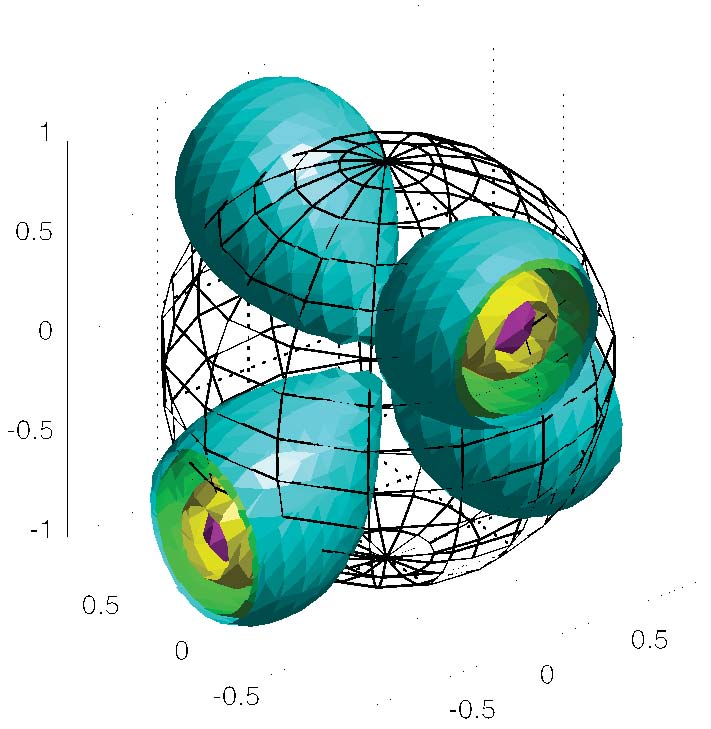Extreme point method for electrostatic problems
The external field of an electrically charged body can be calculated approximately by superposing a finite number of electrical charges that are in an equilibrium on its surface. This equilibrium is characterized by a minimum of the electrostatic energy of the system. Due to the slow convergence of the superimposed point potentials against the electrostatic potential in the outer space of the charged body (~ 1 / √n, n: number of charge carriers), this method in its original form is not competitive with other methods for numerical field calculation, such as edge integral methods.
The underlying idea is to subdivide the approximating point cloud into two classes and only consider interactions between “charges” of the different classes. The geometric duality of the two classes ensures that the points in each class have a good distribution. A two-dimensional analogue of this method was already investigated by K. Menke in the last century. In the latter case, a rapid asymptotic decay of the error on smooth curves in the order of magnitude could also be demonstrated. At this speed of convergence, a few points are sufficient to represent the outer field precisely, so that this procedure can be used efficiently as a formal method for numerical field calculation.
An analysis shows that the largest proportion of errors arises from the fact that when calculating the potential of a finite charge distribution the energy of the charge carriers in their own field would be infinite and cannot be taken into account.
The use of extreme point methods is by no means limited to static problems: By expanding the minimization task for determining the extreme points by an additional time-dependent external field, it is possible to take into account a coupling of transient effects within the enclosed volume with the external field. In particular, the coupling of a transient finite element simulation within the volume with the extreme point method is promising.

Letzte Änderung: 28. June 2021